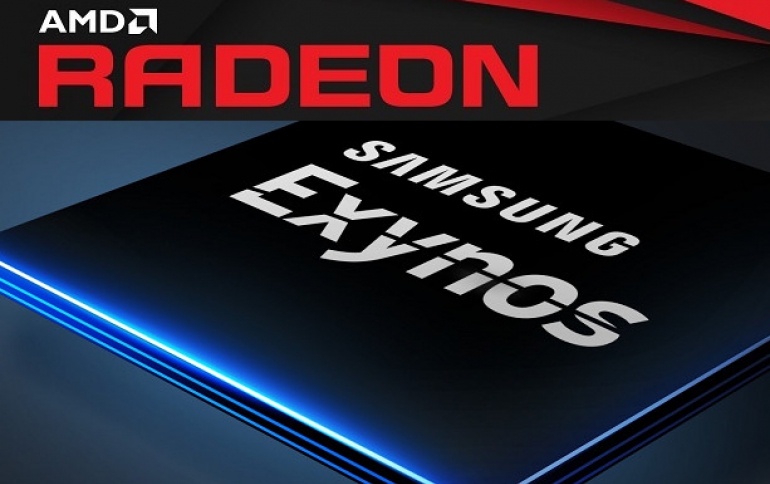
Samsung to Add AMD Graphics to Exynos SoCs
AMD and Samsung Electronics today announced a multi-year strategic partnership in ultra low power, high performance mobile graphics IP based on AMD Radeon graphics technologies.
As part of the partnership, Samsung will license AMD graphics IP and will focus on advanced graphics technologies and solutions across mobile applications, including smartphones.
“As we prepare for disruptive changes in technology and discover new opportunities, our partnership with AMD will allow us to bring groundbreaking graphics products and solutions to market for tomorrow’s mobile applications," said Inyup Kang, president of Samsung Electronics’ S.LSI Business. "We look forward to working with AMD to accelerate innovations in mobile graphics technologies that will help take future mobile computing to the next level.”
“Adoption of our Radeon graphics technologies across the PC, game console, cloud and HPC markets has grown significantly and we are thrilled to now partner with industry leader Samsung to accelerate graphics innovation in the mobile market,” said Dr. Lisa Su, AMD president and CEO. “This strategic partnership will extend the reach of our high-performance Radeon graphics into the mobile market, significantly expanding the Radeon user base and development ecosystem.”
According to the terms of the partnership, AMD will license custom graphics IP based on the recently announced, highly-scalable RDNA graphics architecture to Samsung for use in mobile devices, including smartphones, and other products that complement AMD product offerings.
It is not claer how much Samsung will pay to AMD technology for license fees and royalties.
With this deal, Samsung is making a significant investment to upgrade its graphic performance for future Exynos processors. For Samsung, this is a repudiation of the Arm Mali graphics IP that it has been using since 2014 – at least for the high end of its SoC products.
Arm recently announced a new Mali GPU architecture designed to scale up to higher performance. It’s hard to tell whether Samsung was disappointed in this new Mali offering or decided it wanted to differentiate itself from companies such as MediaTek, which recently announced that it is licensing the Mali G77 core for its forthcoming 5G smartphone SoC.
The deal marks a return of AMD to the smartphone graphics business, after it had sold the Imageon graphics business to Qualcomm in 2009. The Imageon graphics products became the basis for Qualcomm’s Adreno graphics used in its Snapdragon processors.
Unlike other semi-custom deals AMD has made for gaming consoles and super computers, AMD is not going to be designing the complete chip, but just customizing the IP for Samsung’s own chips. The development work for this custom IP will not be trivial because AMD built its Radeon graphics for 15W-65W PC processors, but must now reduce the power to under 5W while maintaining a high level of performance.
Details of the new Samsung mobile GPU have not been revealed, other than it will be based on AMD’s new RDNA architecture, nor has the target process node for the first design been revealed. Considering that this is a new GPU design for Samsung, we do not expect to see it in Exynos chips until 2021 or 2022, which may coincide with the 5nm process node.
The move by Samsung also signals that future Exynos processors will focus on significantly higher performing graphics.
The Samsung deal includes markets that complement AMD’s own markets. This may preclude Samsung from entering the Always Connect PC market with a Windows on Arm (WoA) platform using the AMD IP. With that said, so far only Qualcomm has been qualified by Microsoft to run WoA.





















